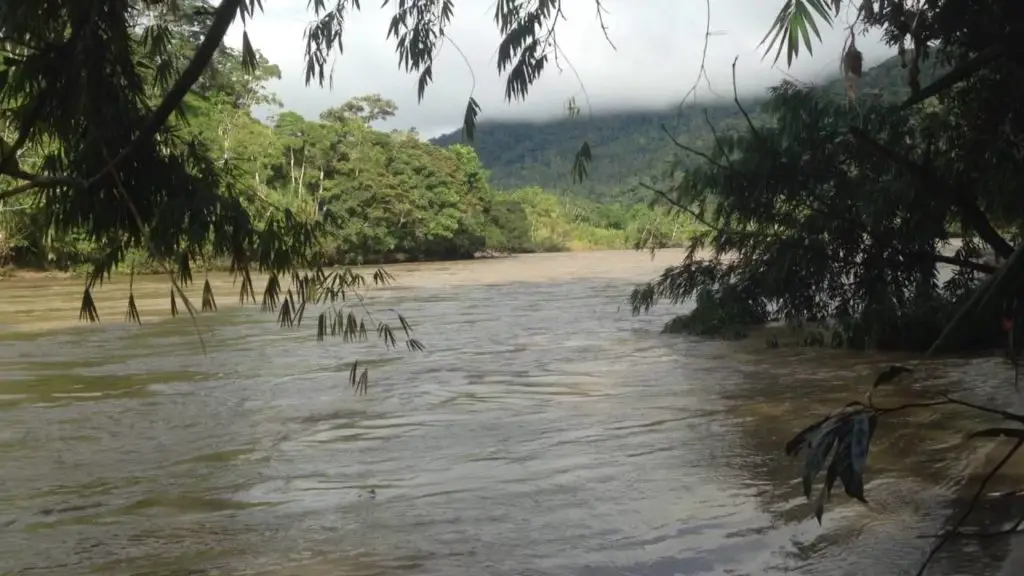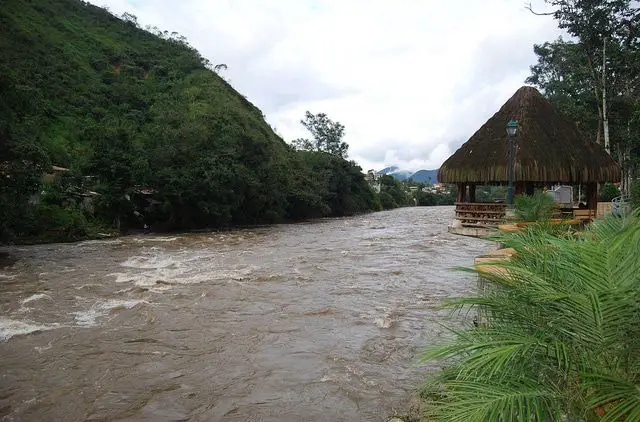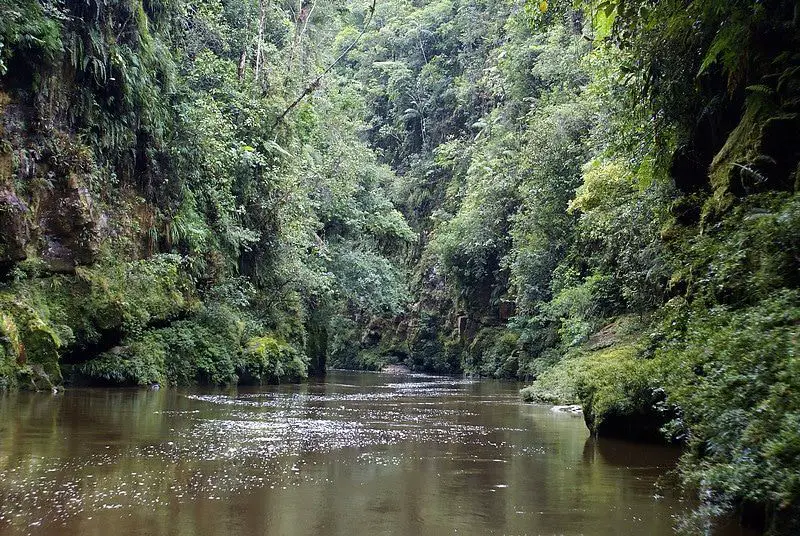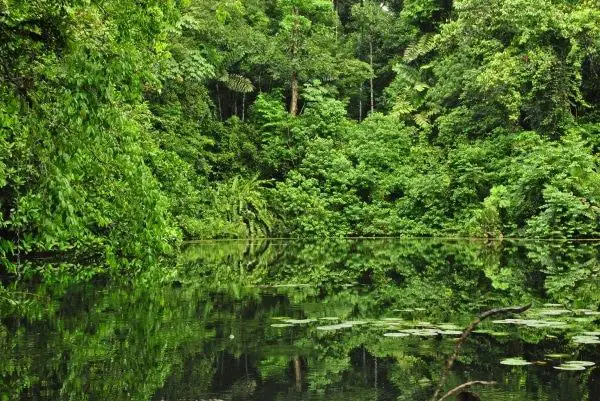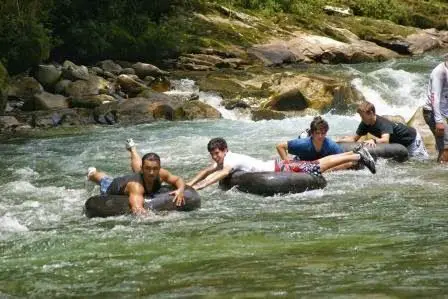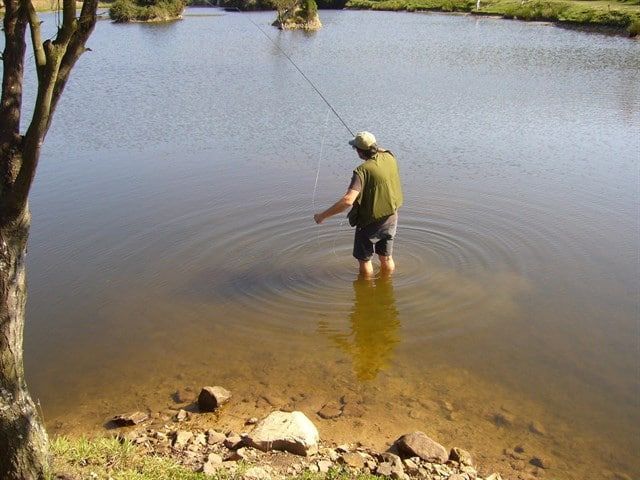The Zamora River is a tributary of the Santiago River in south-eastern Ecuador. Historically, the Spanish called it Yaya Mayu, meaning ‘Father River’, after the name of a group of Shuar people found nearby.
The sources of the Zamora River are located in the Podocarpus National Park, specifically in the Cajanuma Knot. The river flows towards the city of Loja. It crosses the provinces of Loja, Zamora-Chinchipe (where the city of Zamora is located) and Morona-Santiago, where it joins the Santiago (see article: Shannon River).
Indice De Contenido
Characteristics of the Zamora
The Zamora River flows through an area named after the river in south-eastern Ecuador; it is the capital of the department of Zamora-Chinchipe and the seat of the canton of Zamora. Zamora is the largest and most populous city in Zamora-Chinchipe. It is located in the foothills of the Andes at an elevation of 970 metres, at the confluence of the Zamora, Bombuscaro and Jamboé rivers.
Zamora, which has experienced a boom since the recent discovery of gold in the surrounding region, is known as the “Mining Capital of Ecuador” and the “City of Birds and Waterfalls”, referring to the presence of several species of birds and several waterfalls in the streams surrounding the city.
The Roman Catholic Church has a Vicar Apostolic in Zamora, which is considered a missionary settlement. The population is mainly Shuar with some Saraguro villages. The economy is based on local Indian trade (see Guáitara River article).
Zamora River National Park
The Zamora River forms a large part of the Podocarpus National Park. This park has one of the highest levels of biodiversity in the world, which contributes to the incredible beauty of this place. Fortunately, the park is easily accessible from Zamora, just a 10 minute taxi ride from the land terminal.
You will be dropped off at the entrance and then walk another 30 minutes along a dirt road to the visitor centre. The centre is staffed by several knowledgeable and helpful rangers. From here you can take a number of hikes to waterfalls, rivers, some very strenuous hikes up the mountainside and others on the flat along the Zamora River.
You can also camp in the park or stay in one of the cabins. Be sure to bring everything you need (water/food/mosquito repellent) as there are no shops in the park (see Tumbes River article).
The area itself is divided into two main sections, an upper pre-mountain section with sensational hiking trails, tropical cloud forest and excellent birdwatching, and the lower subtropical section with more remote areas of jungle and endemic flora and fauna.
Recently, the Ecuadorian government has declared that all national parks in this area are free, so you will not be charged anything to enter. On the way back from Podocarpus you can expect a taxi at the entrance waiting for people to leave or, if you want to be on the safe side, ask one of the park rangers at the visitor centre for a taxi. They are very helpful and will find one for you.
Flora of the Zamora River
The Zamora River crosses two different geographical regions of Ecuador (the mountainous or Andean region and the Amazon basin region), two different ecosystems (low mountain jungle on the eastern slopes of the Andes and dry shrub forest) and two different indigenous cultures (Saraguro and Shuar).
It will also be involved in community, ethnic and nature tourism and activities such as camping, hiking and nature interpretation.
Paphinia Orchidarium, about 2 km from the town.
It is a greenhouse that is developing a large collection of more than 3000 native plants, including orchids and aroids, as well as living specimens of timber trees, medicinal plants, native edible plants and many other ornamental plants and shrubs (see article: Río Eno).
Fish of the Zamora River
A fish survey was carried out in the Zamora River, in the Upano-Zamora ichtogeographic area, in October 2011 (dry season), February 2012 (transitional period) and May 2012 (wet season). Fish were sampled using four trammels (20 m long, 1.5 m high), 40 fishing lines and a hand net.
A total of 599 individuals from 16 species and six families were captured. The order Characiformes was the most abundant and diverse, and Lebiasina elongata (Lebiasinidae) and Astyanax fasciatus (Characidae) were the most abundant species. Species abundance gradually decreased with the onset of the rainy season.
The high ranges of the genus Chaetostoma (Chaetostoma microps) and the family Heptapteridae (Rhamdia quelen) increased to 1783 m in Ecuador. Fish diversity in the Zamora River needs further study.

